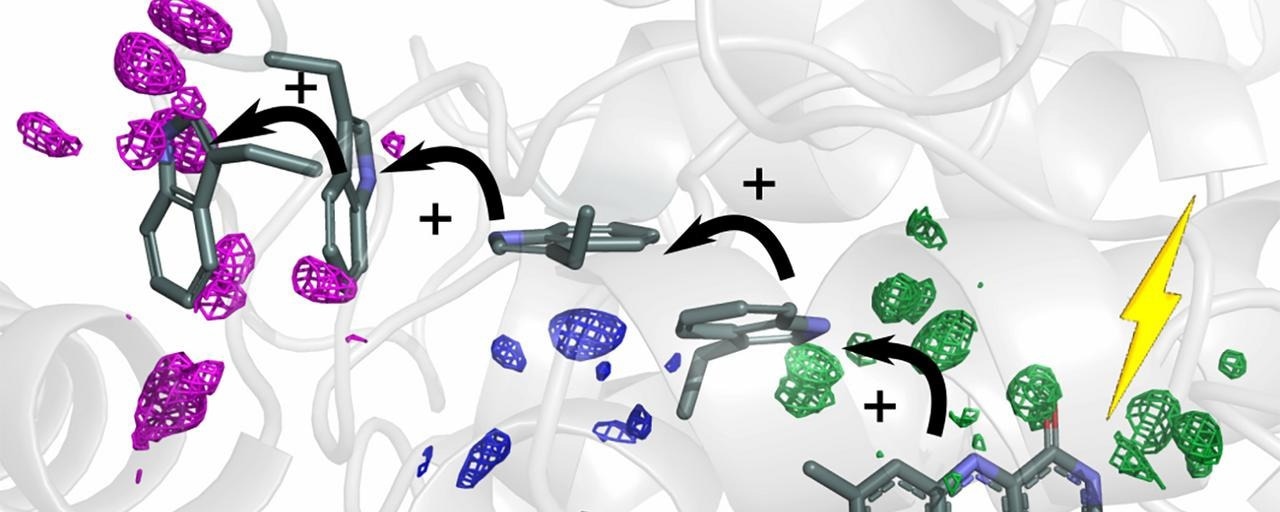Researchers from the University of Gothenburg have been able to describe how energy is directed by small atomic movements within the cell to arrive at its location in the protein.
 The charge moves along a pathway in the protein that guides it to the right place in the protein. Image Credit: University of Gothenburg.
The charge moves along a pathway in the protein that guides it to the right place in the protein. Image Credit: University of Gothenburg.
Future generations of solar cells with higher efficiency may result from replicating these structural alterations in the proteins.
The source of all energy needed to support life on Earth is the sun's rays. One excellent example of a process where solar energy is required for plant growth is photosynthesis. Charge transfer is the process by which energy from the sun's rays is transferred inside of some proteins as electrons.
Researchers have demonstrated how proteins distort to provide effective pathways for the charges to be transported in a new study.
Guided Electrons
We studied a protein, photolyase, in the fruit fly, whose function is to repair damaged DNA. The DNA repair is powered by solar energy, which is transported in the form of electrons along a chain of four tryptophans (amino acids). The interesting discovery is that the surrounding protein structure was reshaped in a very specific way to guide the electrons along the chain.”
Sebastian Westenhoff, Professor, Department of Biophysical Chemistry, University of Gothenburg
The researchers observed that the structural alterations occurred at exact times in accordance with the charge transfer. This is significant information that may be applied to the development of more effective solar panels, batteries, or other energy-transporting devices.
Better Able to Imitate Nature
Evolution is nature’s material development and it is always the best. What we have done is basic research. The more we understand about what happens when proteins absorb sunlight, the better we can imitate this conversion of solar energy into electricity.”
Sebastian Westenhoff, Professor, Department of Biophysical Chemistry, University of Gothenburg
The work, which was published in the journal Nature Chemistry, represents a significant advancement in the understanding of charge transfer in proteins. Through the use of the Serial Femtosecond Crystallography (SFX) technique, researchers may examine the fruit fly process and gain insight into the dynamic interaction of the protein as the electrons migrate.
Sebastian Westenhoff concluded, “This is going to open up new chapters in our understanding of life’s mysteries at the molecular level.”
Source:
Journal reference:
Cellini, A., et.al. (2024) Directed ultrafast conformational changes accompany electron transfer in a photolyase as resolved by serial crystallography. Nature Chemistry. doi.org/10.1038/s41557-023-01413-9.